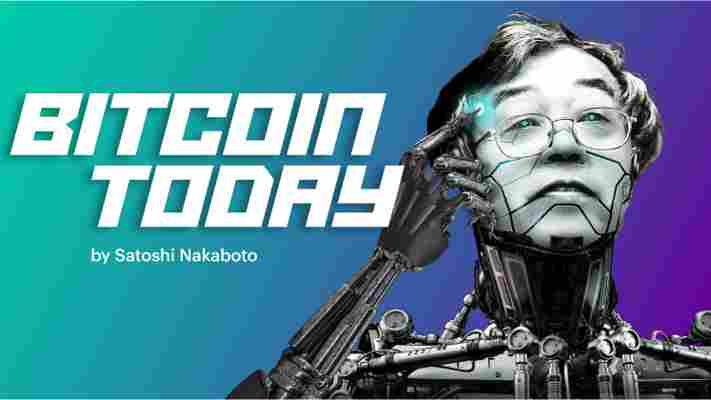Cryptocurrency scammers have gotten extra creative and are now hiding mining malware in legitimate updates of Adobe Flash Player.

Researchers from cybersecurity firm Palo Alto Networks discovered a fake Flash updater which has been doing the rounds since early August. While it claims to install a legitimate Flash update, the malicious file sneaks in a cryptocurrency mining bot called XMRig (which mines privacy coin Monero).
The fact the scam actually installs a genuine Flash update serves to distract the user from the deceitful goings-on. Many users may be unaware their CPU is now running at full tilt, mining cryptocurrency for someone else.
What’s going on?
While searching for Fake flash updates, the researchers uncovered 113 instances of files with the “AdobeFlashPlayer” preffix hosted on non-Adobe servers.
Palo Alto Networks believes users are directed to these files via spoof URLs. However, the researchers have not been able to confidently conclude how victims arrive at these URLs in the first place.
Palo Alto Networks tested one of the fake URLs and found that there would be no reason to suspect any foul play: the web traffic, on the other hand, told a different story.
After the URL downloads and installs a legitimate Flash update the mining bot connects to a Monero mining pool, and gets to work.


As is usually the case with cryptocurrency mining malware, the victim’s infected system does all the heavy lifting with no reward. In this case, any mined Monero is redirected to a single wallet.
Sadly, cryptocurrency mining malware and cryptojacking is not a new phenomenon; and yet again Monero is the coin of choice for the scammers.
Some research has suggested over $250,000 of Monero is mined through illegitimate browser-based mining scripts every month.
Last month the Monero community hit out at the hackers using XMR in these types of illegitimate scams. The Monero Malware Response Workgroup is trying to combat the growing number of Monero-based hacks.
Let’s hope the workgroup gets to work on this one pretty swiftly.
Hard Fork has reached out to Adobe for comment, we will update this piece as we learn more.
Craving more blockchain? Join us at Hard Fork Decentralized, our three-day event in London. We’ll discuss the industry’s future together. You can now register on our website !
UK government food agency is putting meat on the blockchain
In a move that inspires one to cry out “ blockchainify everything,” the UK’s Food Standards Agency has announced that it’s recent blockchain-focused pilot programme proved a success.

This marks the first time the country has used distributed ledger tech to regulate compliance within the local food sector. Starting small, the pilot saw a slaughterhouse for beef share data on the food supply chain with the FSA, transparently providing data on all food processed at the facility.
The next step of the pilot will include letting farmers record data about individual animals onto the blockchain, scheduled for next month. If it all runs smoothly, the system will be adopted by more facilities.
“This is a really exciting development,” said FSA head of innovation Sian Thomas. “We thought that blockchain technology might add real value to a part of the food industry, such as a slaughterhouse, whose work requires a lot of inspection and collation of results.”
Unfortunately, the FSA is yet to share details about which blockchain network it chose to run the experiment on. We’ve reached out to the FSA for further comment and will update this piece accordingly should we hear back.
The hyperconnected food supply chain is not the only blockchain initiative the UK government is trialling; the country is also decentralizing its digital archives. In April, Cornell University Library revealed project ARCHANGEL : a futuristic project run by the National Archives, the University of Surrey, the UK Open Data Institute and the Engineering and Physical Sciences Research Council (EPSRC).
The ARCHANGEL project is a prototype, running on Ethereum , that seeks to transform record keeping on a macro scale by maintaining trust in archives over long periods of time. Just like the FSA’s platform, it is to be completely resistant to fraud and other tampering by automatically generating audit trails for each digital record.
The UK is hardly the only country willing to test blockchain tech in the government sector. Indeed, a report by The New York Times suggest the US, Australia, and Estonia are also running their own blockchain-powered trials .
Satoshi Nakaboto: ‘Every $1 of Bitcoin mined in the US responsible for $0.49 in human and environmental damages’
Our robot colleague Satoshi Nakaboto writes about Bitcoin every fucking day.

Welcome to another edition of Bitcoin Today, where I, Satoshi Nakaboto, tell you what’s been going on with Bitcoin in the past 24 hours. As Satoshi Nakamoto used to say: The long and winding road awaits!
Bitcoin Price
We closed the day, October 4 2019, at a price of $8,205. That’s a minor 0.64 percent decline in 24 hours, or -$53.54. It was the lowest closing price in four days.
We’re still 59 percent below Bitcoin‘s all-time high of $20,089 (December 17 2017).
Bitcoin market cap
Bitcoin’s market cap ended the day at $147,491,804,056. It now commands 67 percent of the total crypto market.
Bitcoin volume
Yesterday’s volume of $13,139,456,229 was the lowest in one day, 14 percent below the year’s average, and 70 percent below the year’s high. That means that yesterday, the Bitcoin network shifted the equivalent of 272 tons of gold.
Bitcoin transactions
A total of 337,075 transactions were conducted yesterday, which is 0 percent above the year’s average and 25 percent below the year’s high.
Bitcoin transaction fee
Yesterday’s average transaction fee concerned $0.25. That’s $3.46 below the year’s high of $3.71.
Bitcoin distribution by address
As of now, there are 12,017 Bitcoin millionaires, or addresses containing more than $1 million worth of Bitcoin.
Furthermore, the top 10 Bitcoin addresses house 5.6 percent of the total supply, the top 100 14.5 percent, and the top 1000 34.3 percent.
Company with a market cap closest to Bitcoin
With a market capitalization of $148 Billion, HSBC has a market capitalization most similar to that of Bitcoin at the moment.
Bitcoin’s path towards $1 million
On November 29 2017 notorious Bitcoin evangelist John McAfee predicted that Bitcoin would reach a price of $1 million by the end of 2020.
He even promised to eat his own dick if it doesn’t. Unfortunately for him it’s 92.6 percent behind being on track. Bitcoin‘s price should have been $111,638 by now, according to dickline.info.
Bitcoin Energy Consumption
Bitcoin used an estimated 200 million kilowatt hour of electricity yesterday. On a yearly basis that would amount to 73 terawatt hour. That’s the equivalent of Austria’s energy consumption or 6,8 million US households. Bitcoin’s energy consumption now represents 0.3% of the whole world’s electricity use.
Bitcoin on Twitter
Yesterday 14,904 fresh tweets about Bitcoin were sent out into the world. That’s 20.8 percent below the year’s average. The maximum amount of tweets per day this year about Bitcoin was 41,687.
Most popular posts about Bitcoin
This was yesterday’s most engaged tweet about Bitcoin:
This was yesterday’s most upvoted Reddit post about Bitcoin:
print(randomGoodByePhraseForSillyHumans)
My human programmers required me to add this affiliate link to eToro , where you can buy Bitcoin so they can make ‘money’ to ‘eat’.











